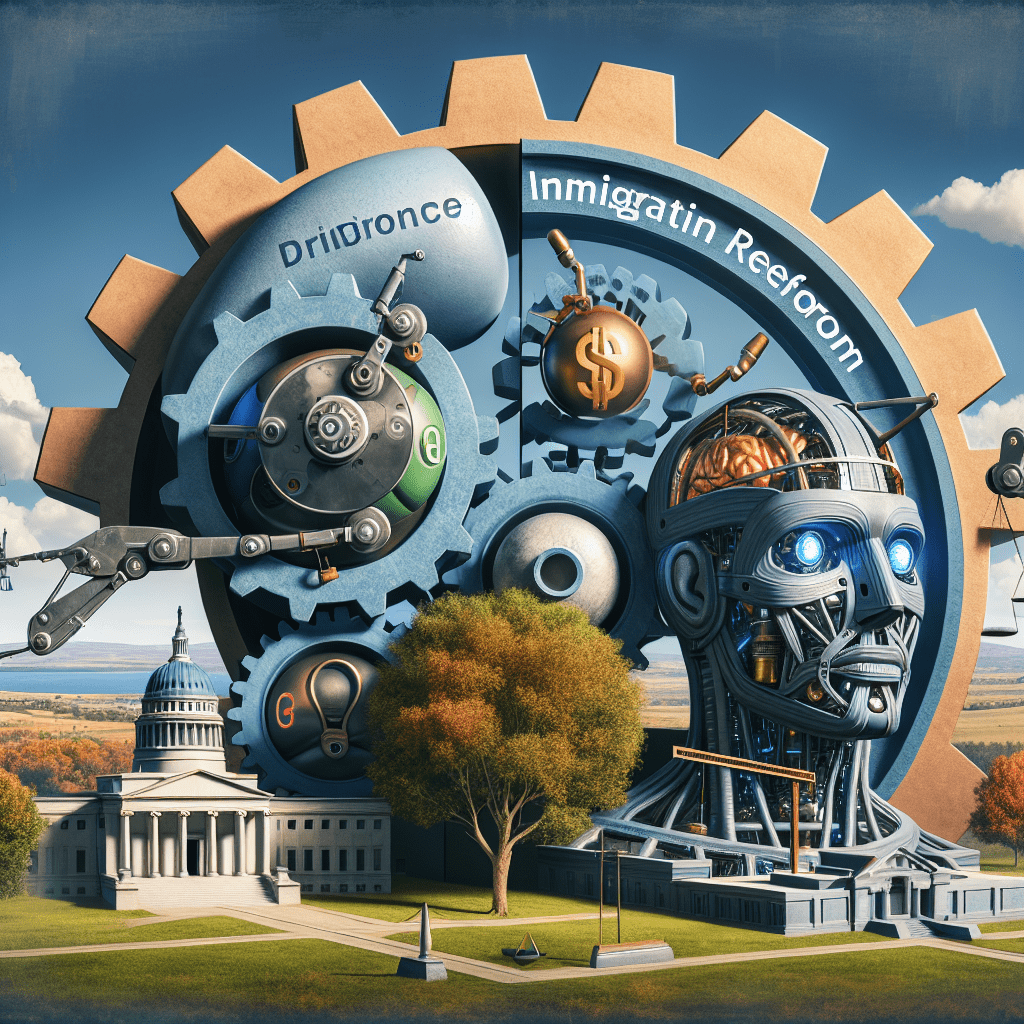Trump’s Strong Options to Address the U.S. Debt Crisis
The U.S. economy stands at a critical juncture, facing a looming debt crisis that President Donald Trump must confront with strategic measures. With federal debt projected to reach 116% of GDP by 2034 according to the Congressional Budget Office, Trump has two viable paths: leveraging AI-driven productivity growth and implementing constructive immigration reform.
Optimizing Productivity Growth with AI
Currently, the U.S. envisages 2% growth in GDP, but if productivity can be boosted by just one percentage point, the debt-to-GDP ratio could stabilize around 100%. The thrust towards AI-driven productivity in recent months offers a bright prospect. As businesses adopt AI technologies, productivity growth could surge from an average of 0.8% to possibly 1.5% per year, offering potential to not only sustain but enhance the economic landscape.
The Impact of AI on Employment and Growth
AI technology has rapidly transformed various sectors, creating opportunities while also necessitating workforce retraining. Industries such as customer services, supply chain management, and healthcare are witnessing significant changes as businesses replace legacy operations with automation. The adoption of AI in areas like drug development and autonomous robotics is expected to add $1 trillion to annual capital spending, which in turn will stimulate job creation and economic resilience.
Workplace Dynamics Post-Pandemic
The post-COVID environment has further complicated labor dynamics. With unemployment having peaked at 14.8% during the pandemic, many workers have since reassessed their career paths, leading to skill mismatches in the labor market. As businesses ramped up hiring, the ongoing talent shortage particularly affects the service industries and agricultural sectors where undocumented workers have increasingly become essential. Hence, enhancing practical training frameworks is imperative.
Immigration Reform as a Catalyst
Coupling productivity growth with constructive immigration reform is crucial. Instead of enacting mass deportations that could destabilize an already fragile economy, Trump should work with Congress to introduce visas for an additional 100,000 skilled immigrant workers monthly. This approach would not only address labor shortages but also bolster productivity growth by connecting skilled workers with sectors in dire need of support.
Building a Future Workforce
To fully tap into the potential of AI and the economy at large, Trump should prioritize redirecting resources to apprenticeships and vocational training, as opposed to pursuing further tax cuts at this time. This investment in workforce training is vital for preparing the next generation of employees who will manage and maintain AI technology and other emerging needs in the job market.
Reevaluating Education Spending
Considerably high expenses at U.S. universities have yielded mixed results, thus a reassessment of funding is necessary. By reallocating resources, we can lay down robust apprenticeship programs that facilitate practical experience, especially in areas where rapid growth aligns with technological advancements. Programs should be designed to equip high school graduates with the skills needed for lucrative and stable careers in fields such as AI programming and robotics management.
The Path Ahead
In summary, Trump stands at a critical point where his choices can profoundly influence the U.S. economy’s trajectory. The strategic combination of AI-enhanced productivity growth and robust immigration reform could result in lasting economic stability. By focusing on vocational training over tax cuts, he would place the nation on the path to sustainable growth, thus circumventing the impending debt crisis.
These issues are a reflection of broader economic trends and represent decisions that can greatly influence the nation moving forward. As an economist and national columnist, Peter Morici provides insights that underline the urgency of this dual approach to safeguarding U.S. economic and fiscal health.

